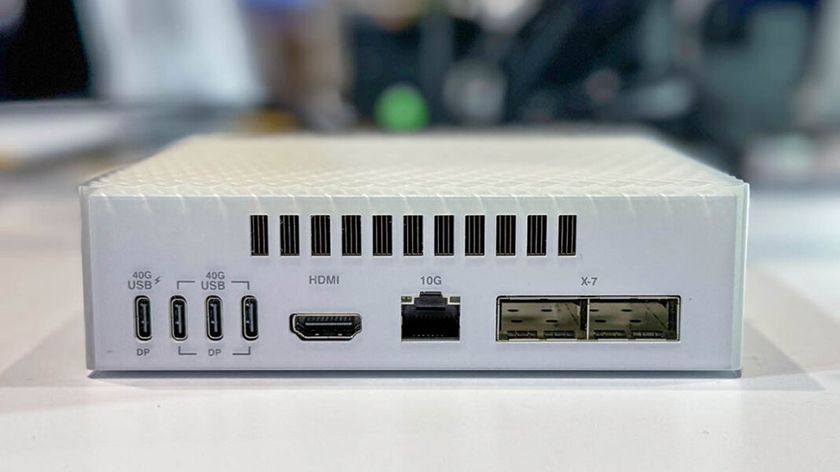What is Infrastructure-as-a-Service? Everything you need to know about IaaS
Moving from your own servers to the cloud

Not every company has a vast IT operation. This might involve a data center with business servers, network switches and equipment, storage -- and the related IT service management staff needed to run it. Yet, with the emergence of cloud computing for storage and web-based software, the concept of outsourcing the computing power itself to the cloud became viable.
Known as Infrastructure-as-a-Service (or IaaS), the idea is to move most of the complexity of IT involving servers, storage and networking and move that out to the cloud where it is managed by a third party. In essence, IaaS gives you access to a data center in the cloud, although there are some important things to know about how this actually works.
History if IaaS
Before diving into the key components of Infrastructure-as-a-Service, it’s important to understand how the concept even developed. Cloud computing became more viable once Internet speeds increased, host providers started addressing security concerns, and businesses started relying on web-based apps (known as Software-as-a-Service or SaaS). A next evolutionary step called Platform-as-a-Service (or PaaS) involves the hardware and operating systems needed to run corporate apps or customer-facing apps; companies can focus on the applications and not the hardware (patches, security, updates, and maintenance).
Infrastructure-as-a-Service expands on both of these models. Typically, this means the entire IT operation is cloud-based, including the software, servers, networks, and storage. Let’s cover each of those, and also explain what is not part of Infrastructure-as-a-Service.
Key components of IaaS
Knowing the key components of Infrastructure-as-a-Service is important, especially since there are still aspects that are managed by your company and not the cloud provider. As mentioned, IaaS typically involves three key components: the servers, network, and storage.
As with most web-based apps, Infrastructure-as-a-Service almost always involves hosted software. This can be the business apps used to run your company, the email clients, the office productivity apps, and just about anything you can think of to run your business. However, it might not include the in-house software you develop and host.
For servers, the cloud provider is tasked with all of the maintenance, updates, endpoint security, and management related to keeping the cloud running at optimal levels. You can trust that the infrastructure management you run on the remote cloud servers is maintained properly. For companies with on-premise data centers, you know that it often requires a full staff of operators to install servers, keep them updated, and fix any problems.
Are you a pro? Subscribe to our newsletter
Sign up to the TechRadar Pro newsletter to get all the top news, opinion, features and guidance your business needs to succeed!
Storage is another key component and the classic (original) definition of cloud computing. Most companies first realized the benefits of the cloud when they started using web-based apps and started relying on cloud storage, which means more “elastic” file storage that can expand and contract to meet your demands and company growth strategies. To end-user sin your company, cloud storage appears to be infinite and always expanding.
Infrastructure-as-a-Service also involves network monitoring and management, and can also expand and change as needed for your company. This can involve all of the network security features you might need, the network management and throttling, and maintenance.
It’s important to know that Infrastructure-as-a-Service does not alleviate all possible IT work from the equation. What is often left to the company to manage involves any custom, in-house software development and also the business computers, printers, and mobile devices such as smartphones, that attach to the cloud and benefit from Infrastructure-as-a-Service. Often, there is a middleware component as well, especially if you also use an internal data center and need to make connections to the Infrastructure-as-a-Service provider or between custom apps.
Benefits of IaaS
As you can imagine, the key benefit here is reduced complexity. The cloud hosting provider is most of the complexity to manage and update servers, maintain network topologies, and to make sure the storage is always available and archived. As a company moves from SaaS only, the PaaS used with custom apps, up to IaaS as a more complete solution, the benefits also increase in terms of dealing with less and less complexity.
Another benefit has to do with security. Many companies are dealing with security issues on a continual basis -- security on servers, networks, within storage archives, and even with end-users. With Infrastructure-as-a-Service, the security issues move from the data center out to the end-user, and IT staff will typically shift to a support role for end-users where they can assist with problems but also educate employees about proper security protocols.
Another shift is that the IT employees become partners with the host provider and their role tends to be more about on-premise support. This often alleviates staff to focus on strategy, partnering with the provider to orchestrate cloud services, and develop long-term plans for IT operations, without the typical micro-management duties involved with servers, networks, and storage.
In the end, Infrastructure-as-a-Service is a way to outsource complexity and refocus on internal needs, employee support, and in-house development and infrastructure duties.
- Stay safe online with the best cloud antivirus.
John Brandon has covered gadgets and cars for the past 12 years having published over 12,000 articles and tested nearly 8,000 products. He's nothing if not prolific. Before starting his writing career, he led an Information Design practice at a large consumer electronics retailer in the US. His hobbies include deep sea exploration, complaining about the weather, and engineering a vast multiverse conspiracy.

















